Life and work
When he was barely five years old, his family moved to Madrid. He began his studies there and soon made contact with the foreign sculptors, mostly French, who worked at decorating the Royal buildings, and was exposed to new styles originating in Italy, transmitted by Spaniards studying in Rome; notably Felipe de Castro. It is not, however, known with whom he studied. In 1730, he married Josefa Fernández Pillado.
He participated in planning the Real Academia de Bellas Artes de San Fernando and, in 1752, when it opened, he was appointed a Lieutenant-Director, becoming the Director of Sculpture in 1762. In 1765, his wife died, leaving him with a young daughter. Three months later, he married Juliana Pérez. In 1771, he was appointed General Director of the Academia. He was named an Academician of Merit at the Real Academia de Bellas Artes de San Carlos in 1768.
He was very prolific. His most notable sculpture in marble is the Fountain of Neptune, from a design by Ventura Rodríguez. Notable is a bust of King Charles III and several statues of previous kings for the Royal Palace of Madrid. Additionally, he provided numerous religious figures for institutions such as the Church of San Jerónimo el Real, the Church of San Marcos, and the Church of San Martín in Torrecilla en Cameros. As one of his last works, he participated in decorating the altar at Toledo Cathedral, but there has been some difficulty distinguishing his contributions from those of the other artists involved. The project was left unfinished at his death.
He also sculpted in wood. Many of his works have been incorrectly attributed to his contemporary, Luis Salvador Carmona; a problem complicated by the fact that few of them are dated.
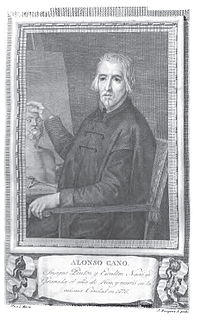
Alonso Cano or Alonzo Cano was a Spanish painter, architect, and sculptor born in Granada.

Juan Bordes. also known as Juan Bordes Caballero, is a Spanish sculptor. specializing in the portrayal of the human figure. He is the author of several books, the organizer of convention programs, and the subject of exhibitions.

Ricardo Bellver was a Spanish sculptor.
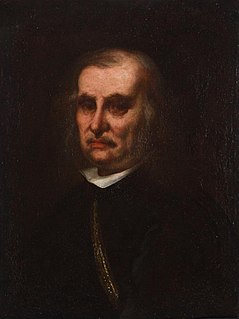
Juan Carreño de Miranda was a Spanish painter of the Baroque period.

Manuel Rodulfo Tardo was a Cuban artist. He studied at the Escuela Nacional de Bellas Artes "San Alejandro", Havana, Cuba, together with Juan Esnard Heydrich y José Francisco Cobos, and at The Sculpture Center, New York City. One of his mentors was the Cuban sculptor Juan José Sicre. He was a painter as well as a sculptor.

Mariano Salvador Maella Pérez was a Spanish painter known primarily for his portraits and religious frescoes.
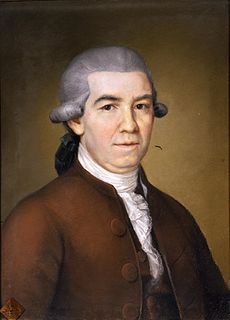
Manuel Salvador Carmona was a Spanish engraver, designer and illustrator. Two of his brothers were also artists: José Salvador Carmona, a sculptor, and Juan Antonio Salvador Carmona, also an engraver.

José Camarón Bonanat, or Bononat was a Spanish draftsman, painter and engraver. Most early sources give his maternal family name as Boronat.

Gregorio Fernández was a Spanish Baroque sculptor. He belongs to the Castilian school of sculpture, following the style of other great artists like Alonso Berruguete, Juan de Juni, Pompeyo Leoni, and Juan de Arfe.
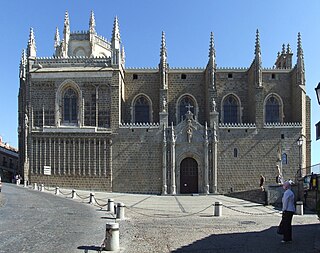
The Monastery of San Juan de los Reyes is an Isabelline style Franciscan monastery in Toledo, in Castile-La Mancha, Spain, built by the Catholic Monarchs (1477–1504).

The Granadan school of sculpture or Granadine school of sculpture—the tradition of Christian religious sculpture in Granada, Andalusia, Spain—began in the 16th century and constituted a clear tradition of its own by the 17th century. The extraordinary artistic activity of Renaissance Granada brought artists to that city from various regions of Spain and from other parts of Europe.

Luis Salvador Carmona was a Spanish Baroque sculptor who came from a family of artists.

José María Avrial y Flores was a Spanish painter, illustrator and scenographer.
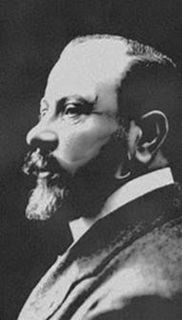
Juan Martínez Abades was a Spanish painter in the Naturalist style, who specialized in seascapes and other maritime scenes from the Cornisa Cantábrica. He was also a talented song writer and semi-professional singer.
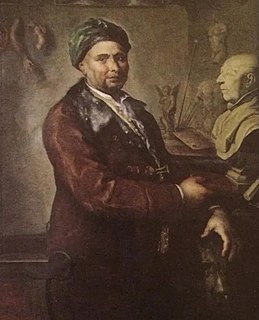
Felipe de Castro was a Spanish sculptor of Galician origin. He was among the first to introduce the Neoclassical style to Spain, and served as sculptor to King Ferdinand VI. Some sources give his year of birth as 1704.

Gregorio Ferro Requeijo was a Spanish painter and academy director.
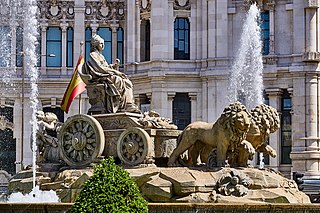
Francisco Gutiérrez Arribas was a Spanish sculptor.
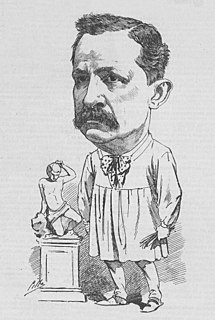
Agapit Vallmitjana i Barbany was a Catalan sculptor, in the Realist style. His brother Venanci was also a sculptor, with whom he usually collaborated.

Manuel Domínguez Sánchez was a Spanish painter and illustrator in the Academic style. His early work shows some influence from the Nazarenes. Later, his style came to resemble that of Eduardo Rosales.
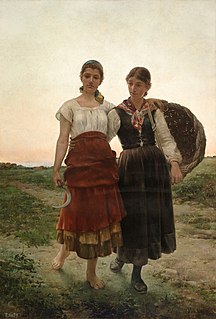
Tomás García Sampedro was a Spanish painter; primarily of landscapes and rural scenes, in costumbrista style.
This page is based on this
Wikipedia article Text is available under the
CC BY-SA 4.0 license; additional terms may apply.
Images, videos and audio are available under their respective licenses.




















